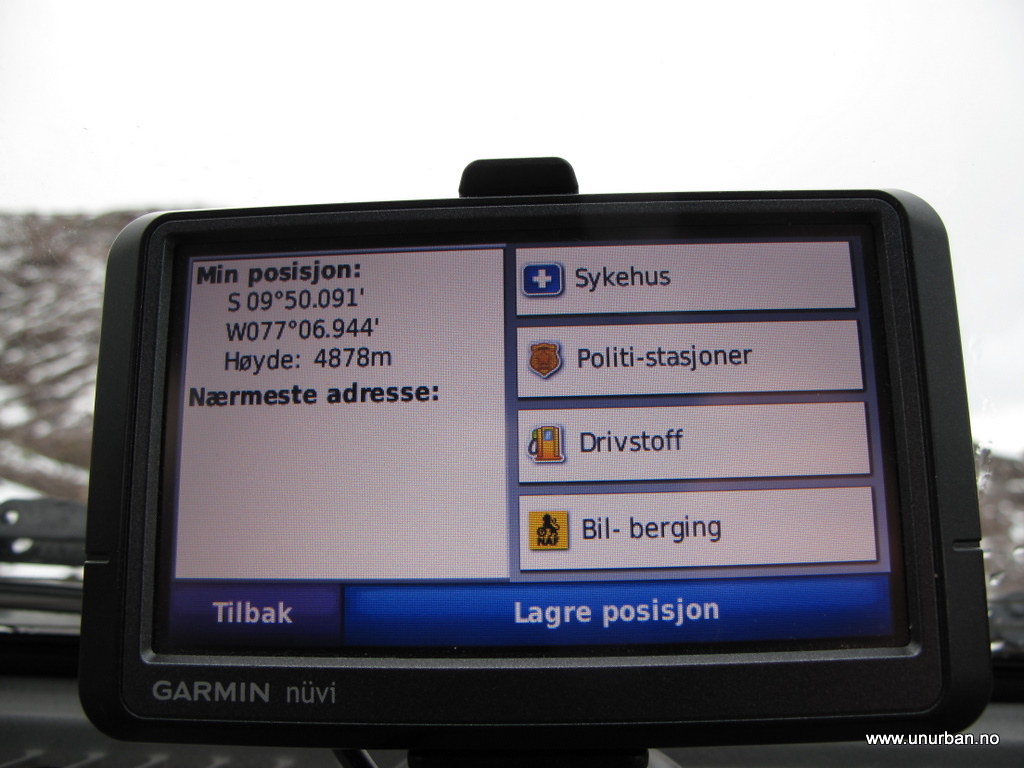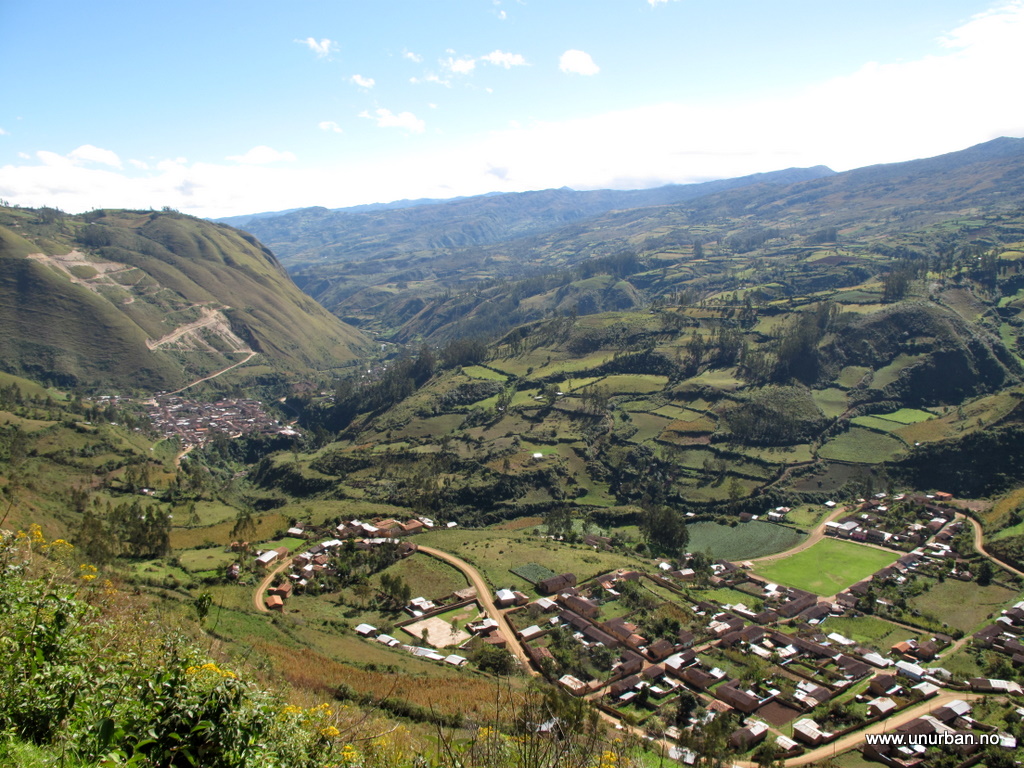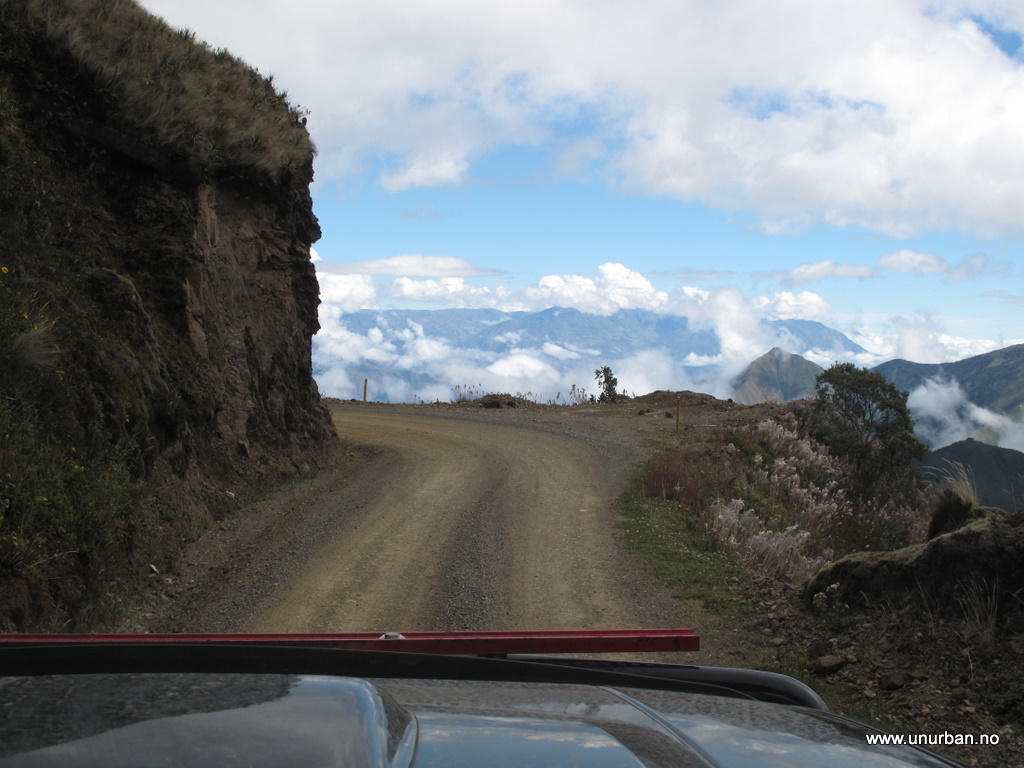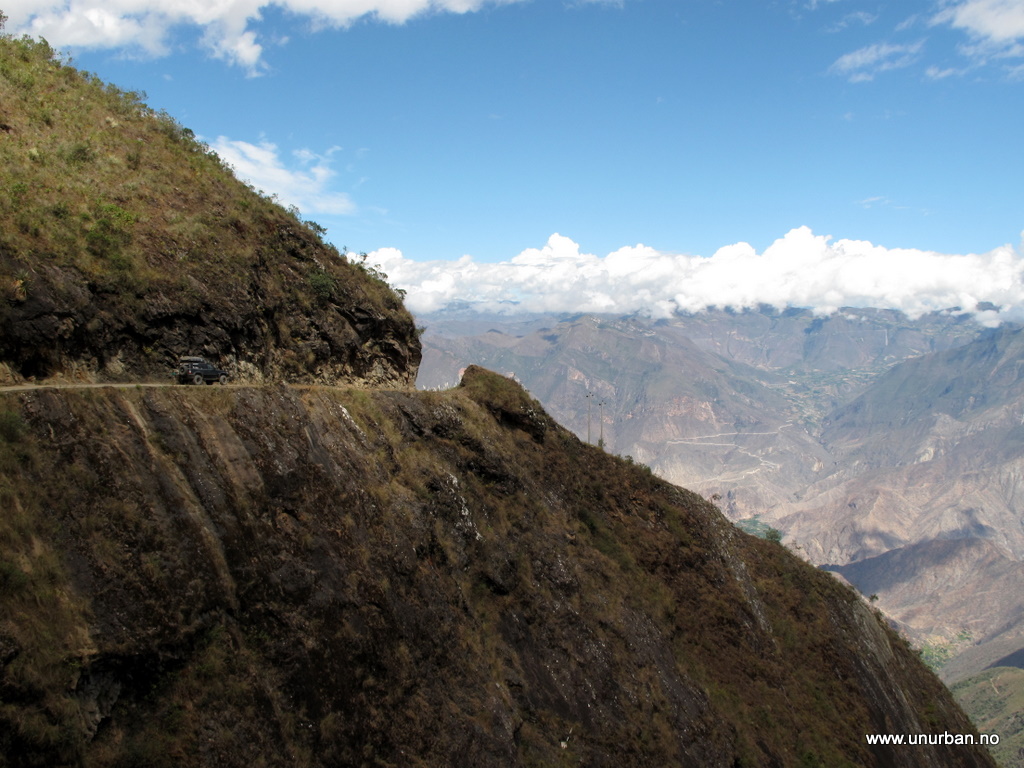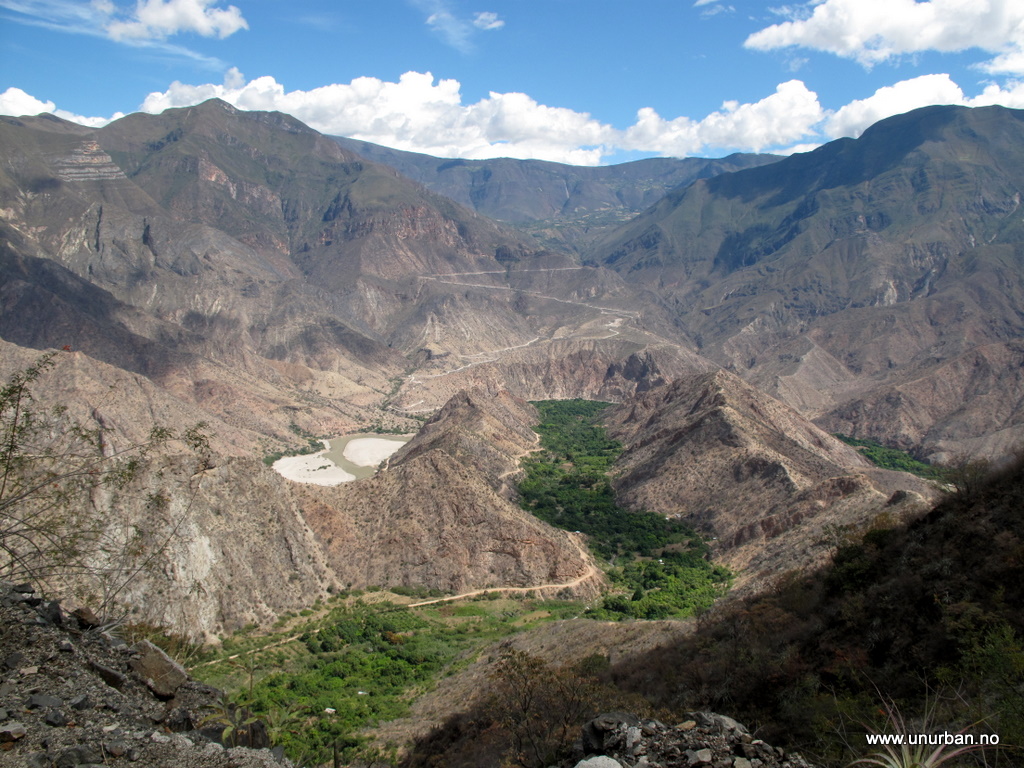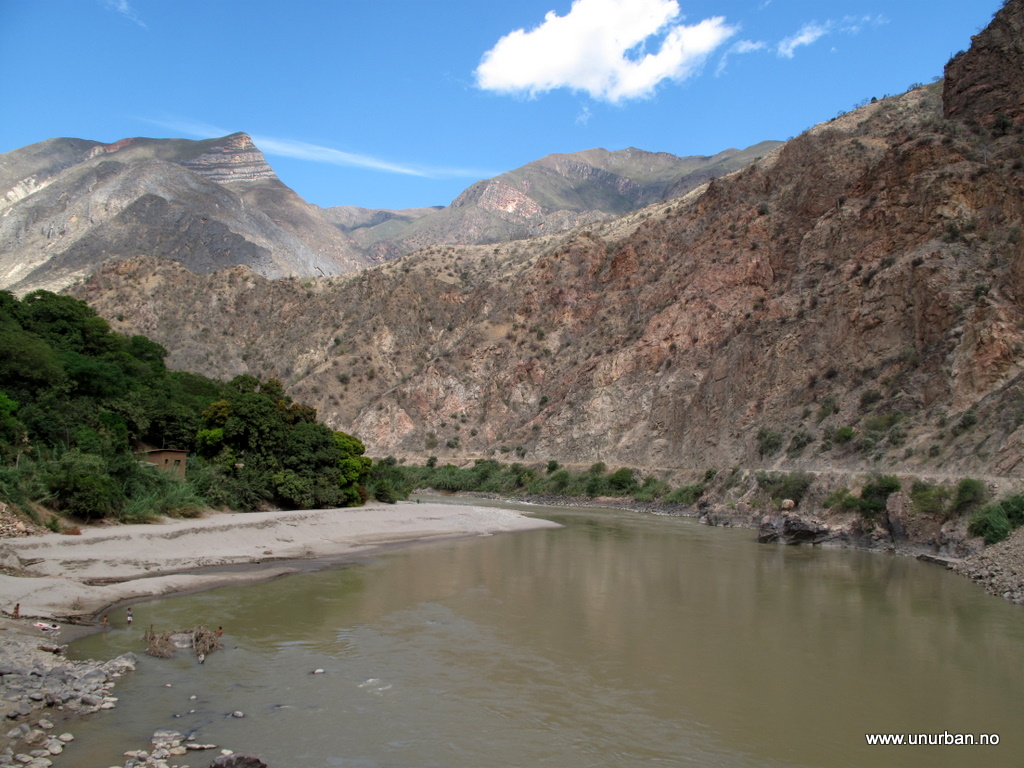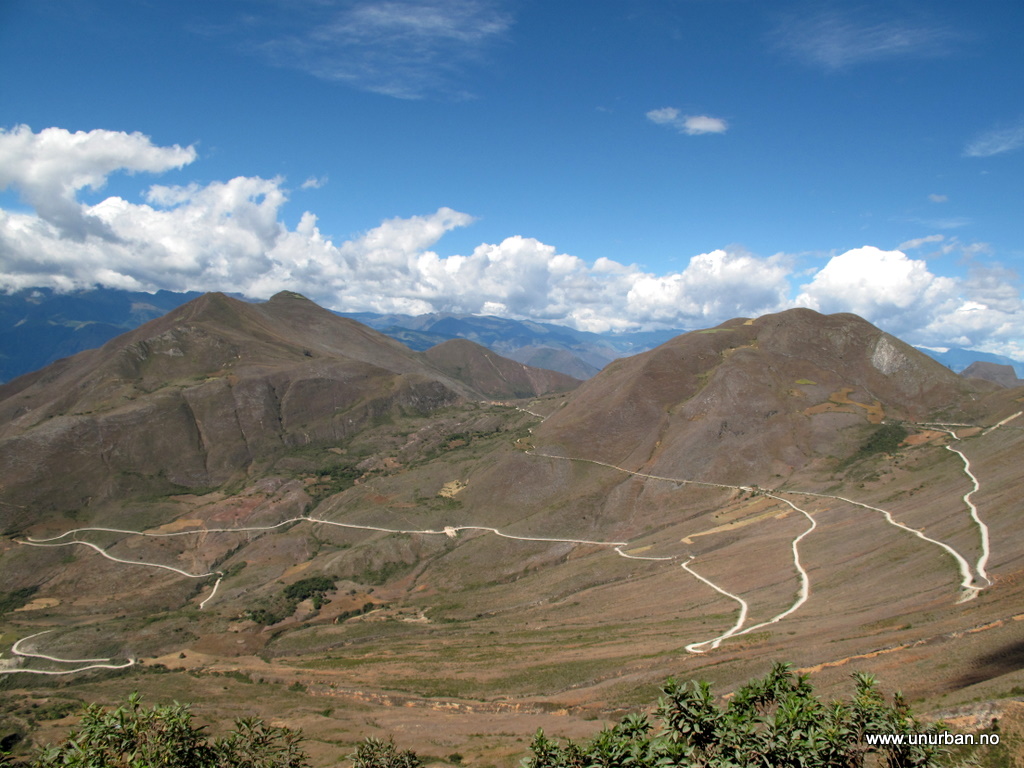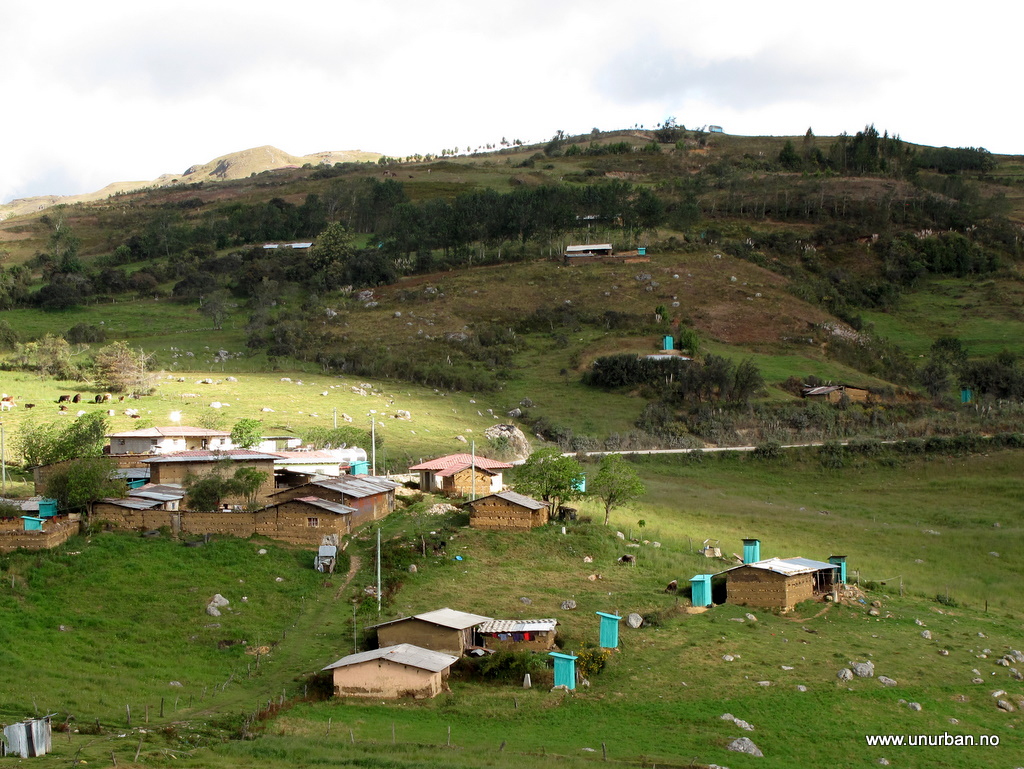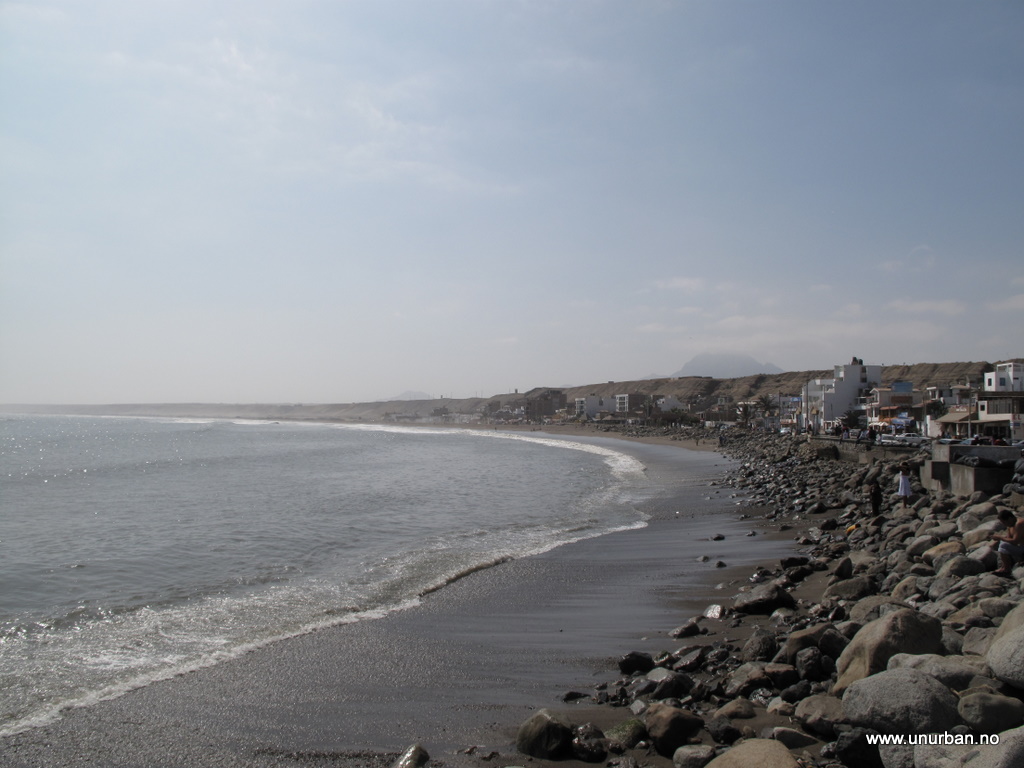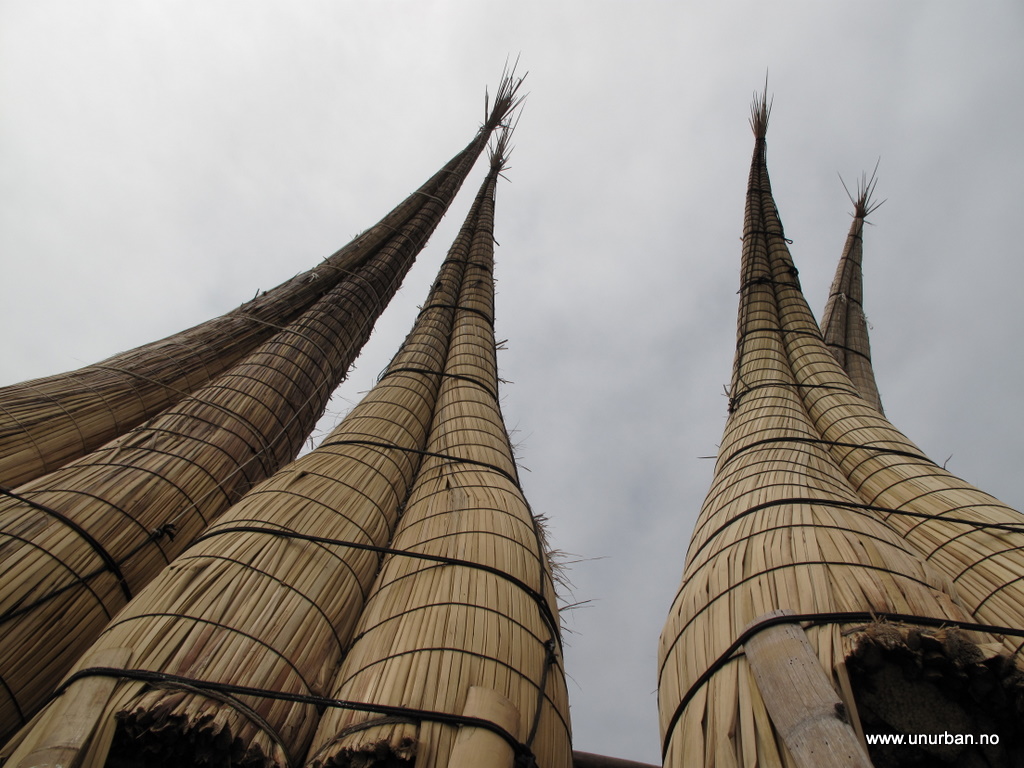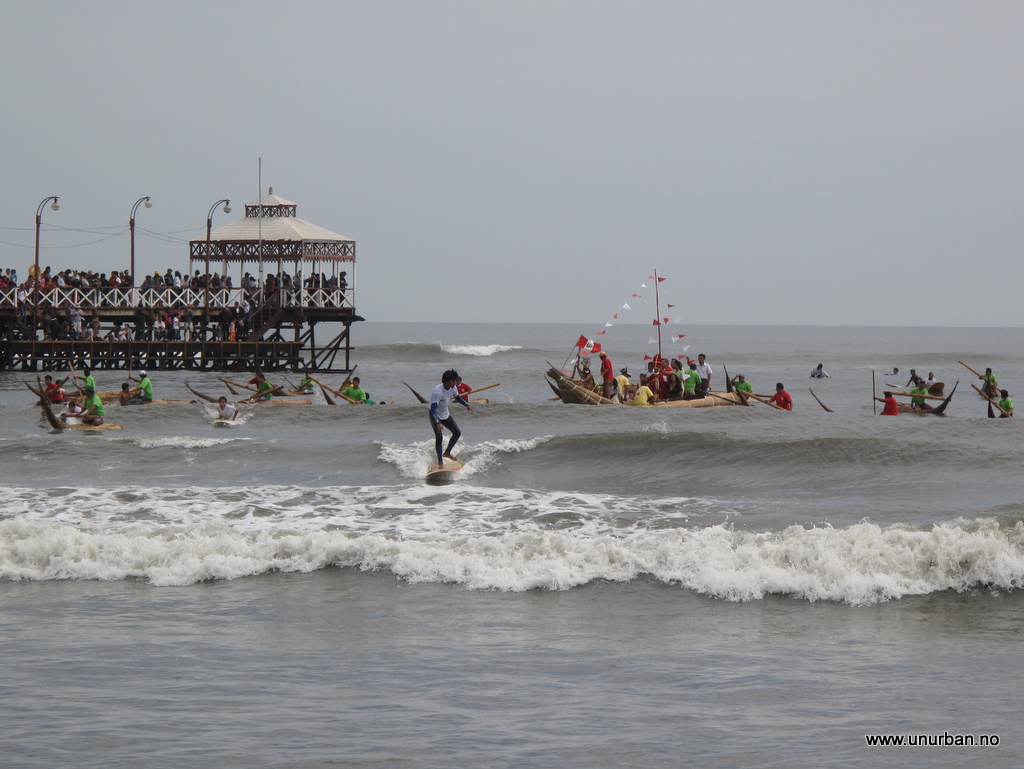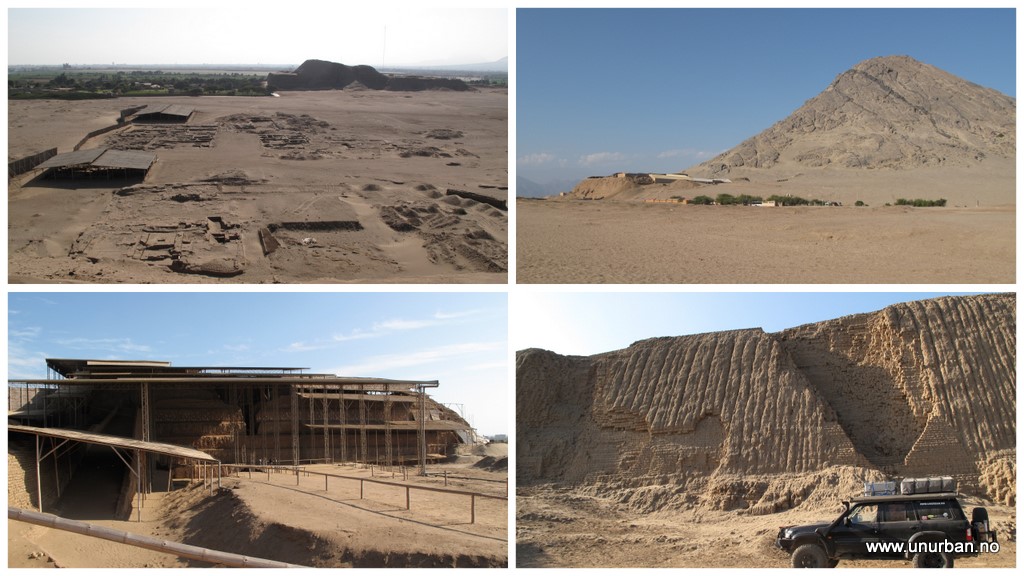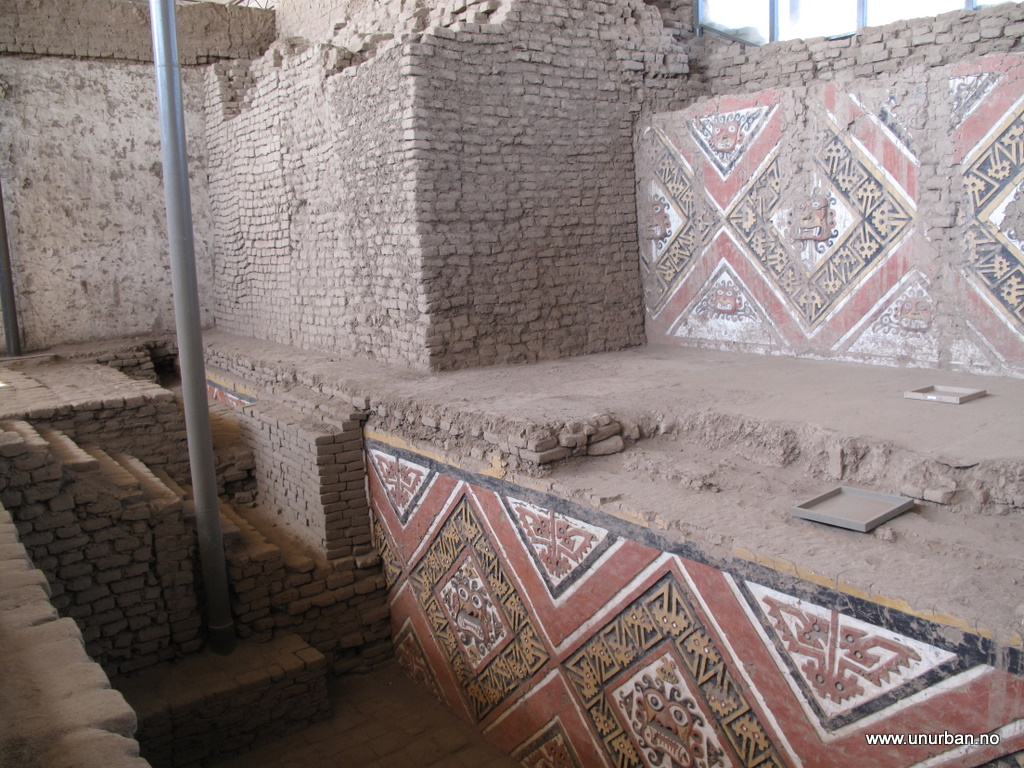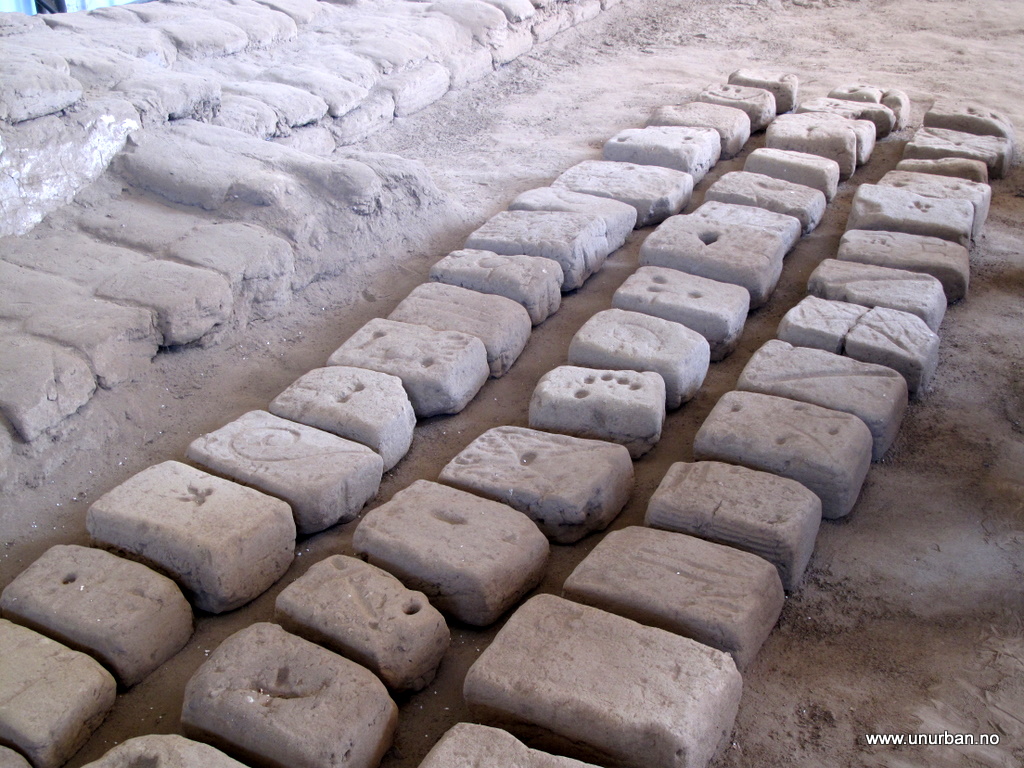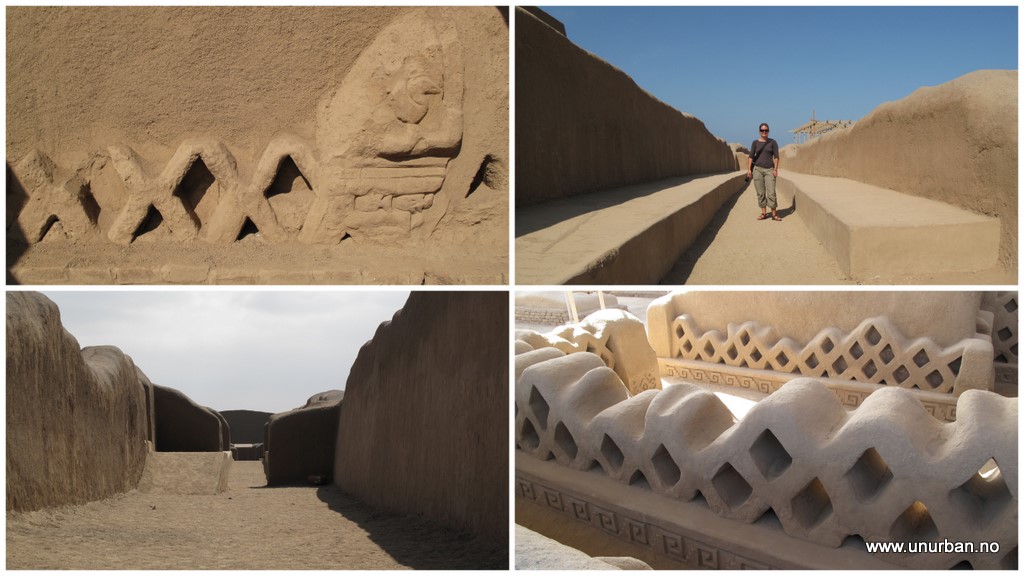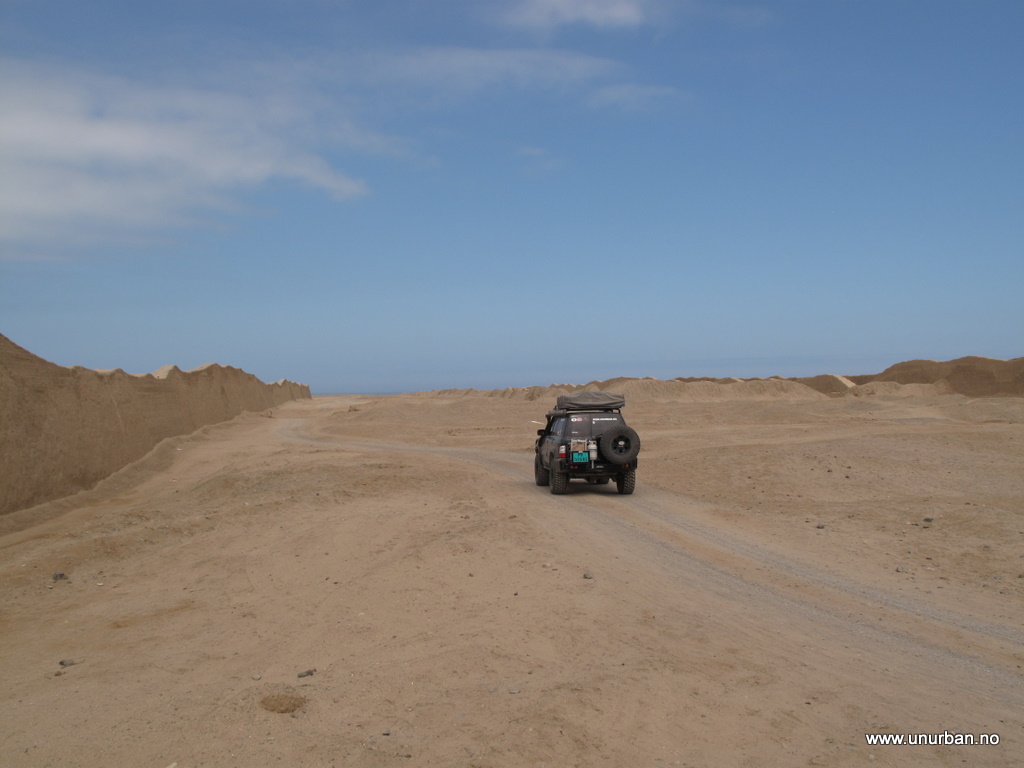Trujillo and The Pacific
Our planned travel route in Peru would take us south going more or less up in the Andes mountains. However, we decided to make one stop down by the coast around Trujillo to check out the Pacific once more. We camped in the small fishing village of Huanchaco. While we were there it was some kind of festival for the fishermen.
The local fishermen still use the traditional small boat made of four cigar shaped bundles of tied together tortora reeds when they go out fishing.
For the festival, one larger boat was made out of tortora reeds, and in this one they put a saint (or something) that they sailed to shore and transferred to a small copy of more modern boat. We did not fully understand what happened at this festival, but people were happy and in a good mood.
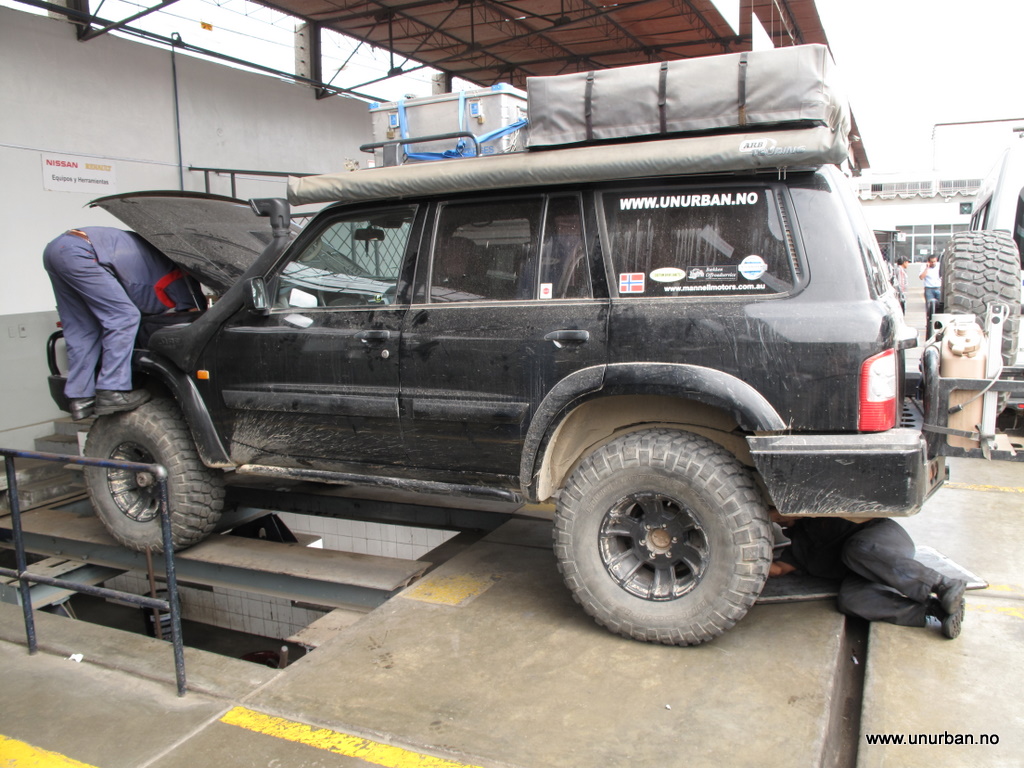
Since we were close to a bigger city, we used the opportunity to have a service on the Patrol at the Nissan-Volvo garage in Trujillo. It was a couple of things we wanted done beside the normal oil and filter changes (hand brake parts, bushes for the rear link arms, a new resistor for a sensor lamp, etc), and when we talked to them and made an appointment for the next morning, they said that they would be able to get parts and fix what we wanted done. The next day when we show up for the service they tell us our Norwegian Patrol is a bit different from the one in Peru, and therefore they cannot get the parts we wanted (Next day when we passed a parked Patrol on the street Espen had a look underneath it and the parts we wanted looked exactly like ours…). So all they ended up being able to do was the normal simple oil and filter changes. We wondered what Peruvian owners of Patrols do here if they really need something fixed on their car. It was not really an emergency for us so we will see if Espen can fix what Nissan can’t do somewhere else.
Around Trujillo there are numerous archeological sites, and we decided to visit two of the sites. One was the incredible La Huaca de la Luna (Temple of the Moon) which is a pyramid/temple built out of adobe bricks by the Moche culture. The peak for the Moche culture was between 400 and 600 AD.
The Pyramid of the Moon is built at the foot of the sacred mountain Cerro Blanco, and it is part of an older complex where one pyramid was built over an older pyramid. In total there are five pyramids under the pyramid that we see.
The outer layer was pretty damaged by rain and weather, but archeologist found incredible painted friezes underneath on pyramid four and three. It is an incredible amount of adobe bricks that has been produced to build this pyramid, and the producer have signed the bricks with his signature… (see the smiley face on the upper left row

).
500 meters from the Moon Temple is the Sun Temple (Huaca del Sol), and in between them is (well, it used to be)) the village. The Temple of the Sun is not open for visitors, but we could drive next to it and look up on it. Our guide book told us that the estimates of the pyramid’s brickwork vary between 50 million and 140 million adobe bricks!!! No matter what the number is, it is incredible!
On the road between Trujillo and Huanchuco is the ruined city of Chan Chan that stretches across a large sector of the Moche Valley. Chan Chan was the capital of the Chimue Empire that appeared on the Peruvian Coast around 1100 AD. Tschudi Temple-Citadel, which is one out of nine Citadels, has been restored and is open for visitors. What impressed us the most about Chan Chan was not the restored site, but the size of the whole city and the remains you can still see. It must have been an enormous city at its peak.
After some days on the cost it was time to head up to the mountains again. Goodbye Pacific!!
E&M

